Physical Address
304 North Cardinal St.
Dorchester Center, MA 02124
Conventional X-ray imaging of the salivary gland has diminished relevance. The soft tissue X-ray does not depict a salivary stone well, and the summation effects of conventional X-ray images can make it difficult to locate the few visible structures. The main importance lies in incidental findings of calcifications in the salivary glands. Key examples are X-rays of the cervical spine ( Fig. 3.1.1 ) and dental films ( Fig. 3.1.2 ).

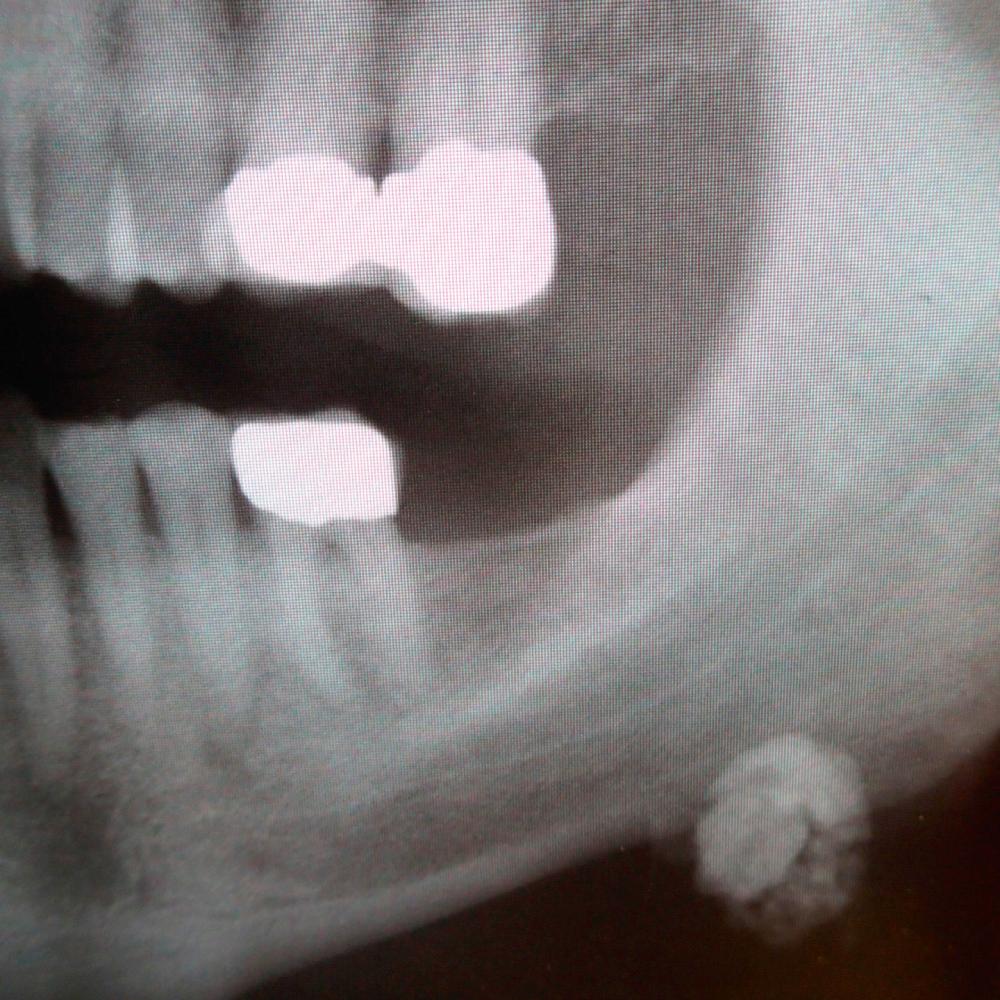
However, it is sometimes difficult to differentiate salivary stones from other calcifications, including phleboliths or calcified lymph nodes. Additionally, up to 20% of stones cannot be detected by standard X-ray, as they are not radiographically opaque. Other imaging modalities enhance evaluation for stones. Ultrasound is often the next step ( Fig. 3.1.3 ).
Conventional X-ray imaging of the salivary gland has diminished relevance.
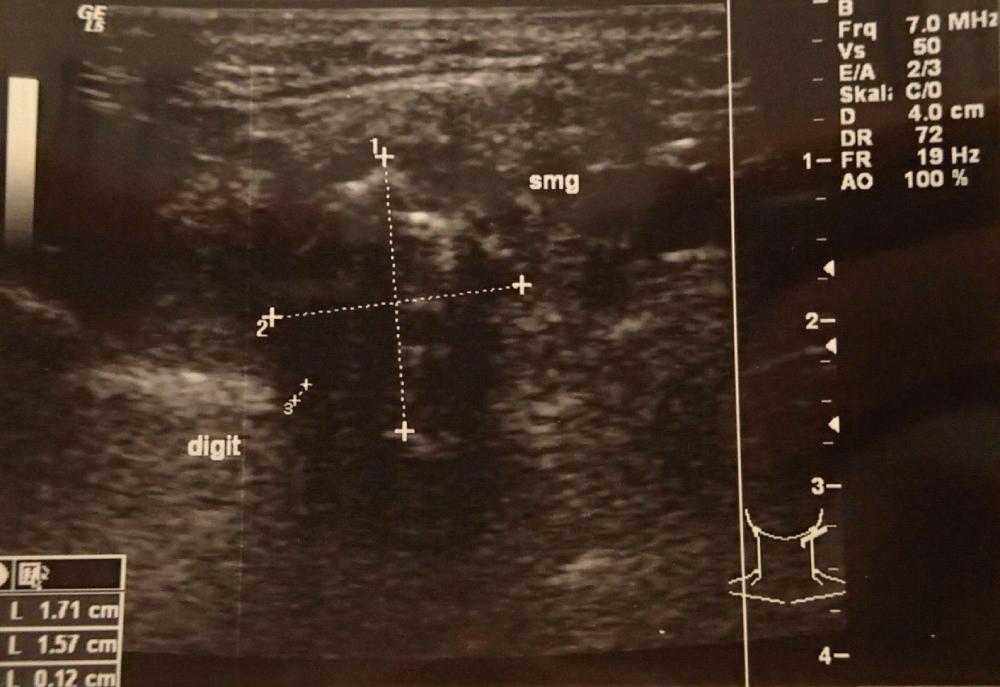
Ultrasonography is a noninvasive, relatively inexpensive, real-time examination method, without radiation exposure. It is suitable for the examination of the salivary glands as most relevant aspects are located quite superficially. The reader is also referred to head and neck ultrasound textbooks.
The parotid gland lies partially superior to the masseter muscle and in between the retromandibular space, anterior to the mastoid ( Fig. 3.2.1 ). Stensen's duct navigates around the masseter muscle, perforates the buccinator muscle, and enters the oral cavity. It normally is not visible on ultrasound; however, this often can be achieved by administering the patient a sialagogue ( Fig. 3.2.2 ). Obstructions, including stones or stenosis, can dilate the duct. Sometimes an accessory gland can be found next to the duct. It can be difficult or even impossible to visualize the complete deep lobe of the gland by ultrasound. Penetration of the ultrasound waves is limited due to tissue attenuation and the shadow of the mandible that prevent visualization of parts lying in the deep parotid lobe.
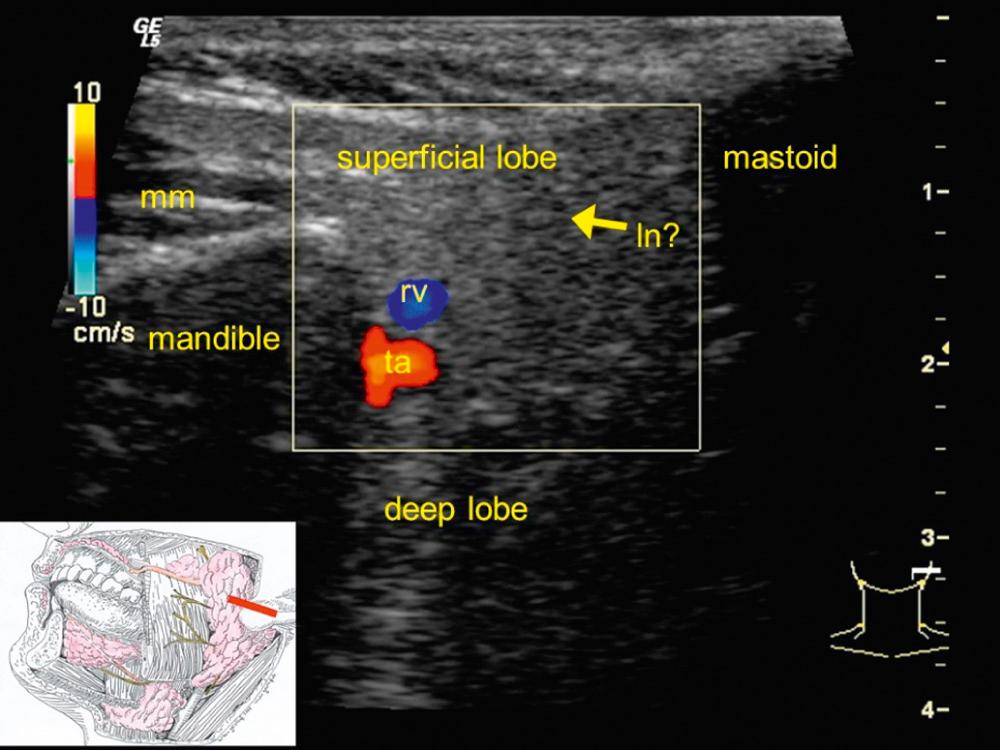
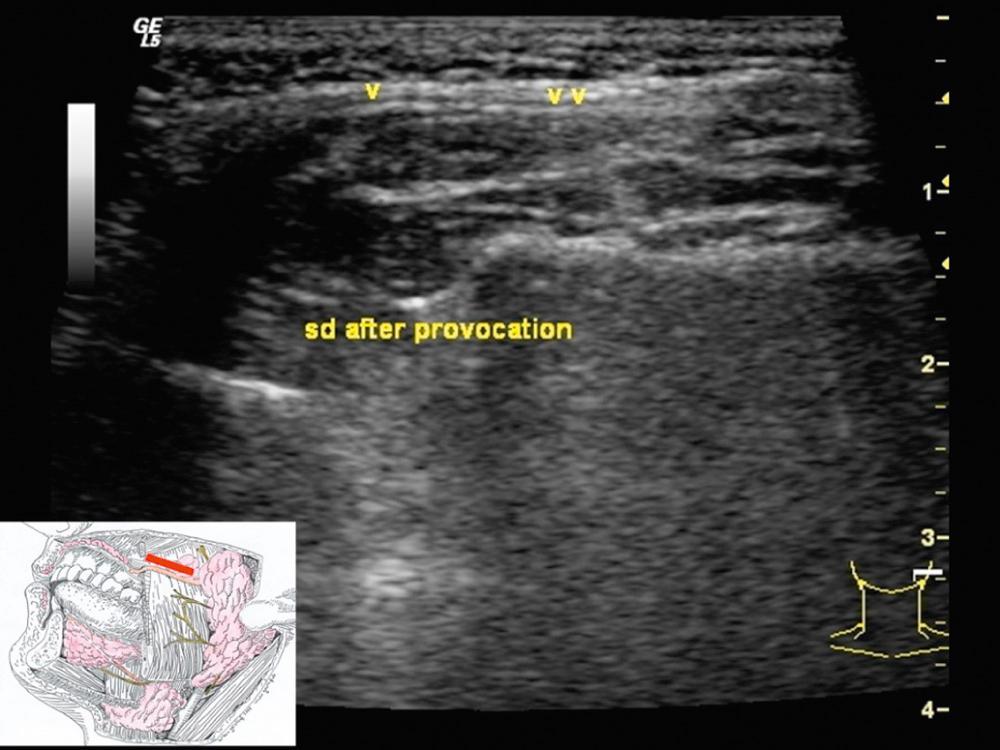
The submandibular gland is situated in the submandibular triangle, formed by the body of the mandible, and the anterior and posterior bellies of the digastric muscle. The mylohyoid muscle often indents the gland near to the hilum of the gland. When examining the gland by ultrasound, it is often possible to visualize the tongue and the pharyngeal tonsil at the same time ( Fig. 3.2.3 ). The mandible is in close proximity to the submandibular gland ( Fig. 3.2.4 ). The facial artery and vein cross the gland. The visualization of Wharton's duct is also possible by provocation with a sialagogue.
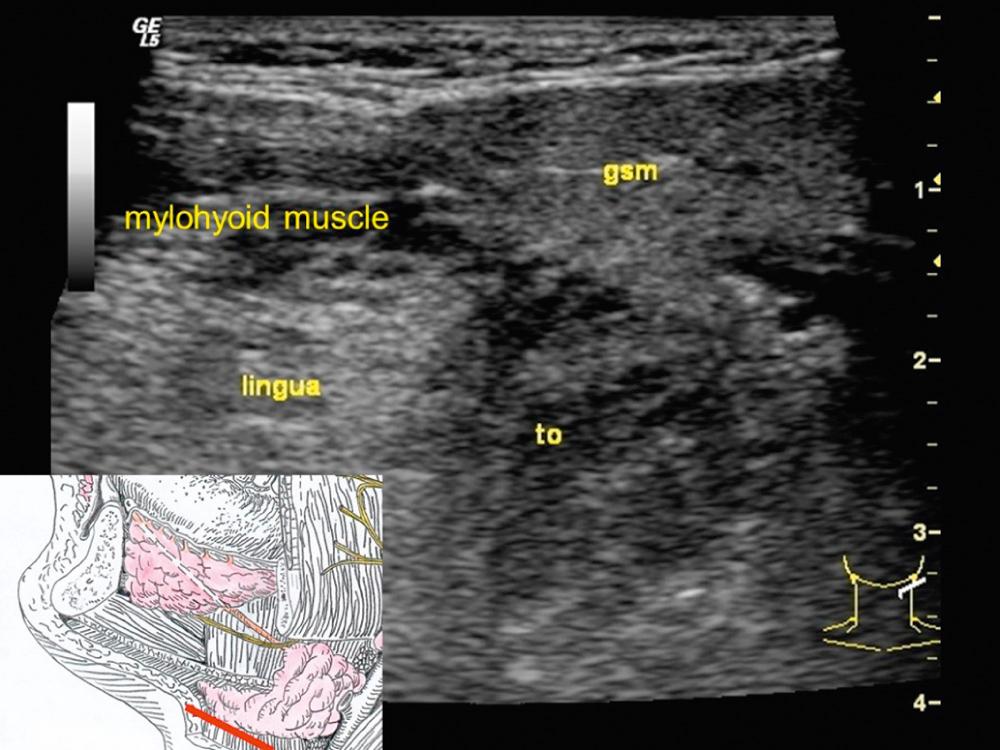

The sublingual gland in the longitudinal view is positioned above the mylohyoid muscle behind the front part of the mandible, lateral to muscles of the tongue ( Fig. 3.2.5 ). Both sublingual glands and associated muscles can be visualized on transverse view ( Fig. 3.2.6 ). The duct system of the sublingual gland is normally not visible. However, it has a close relationship to Wharton's duct, which runs superficially. When Wharton's duct is dilated by an obstruction from a stone, this relationship can become visible ( Fig. 3.2.7 ).
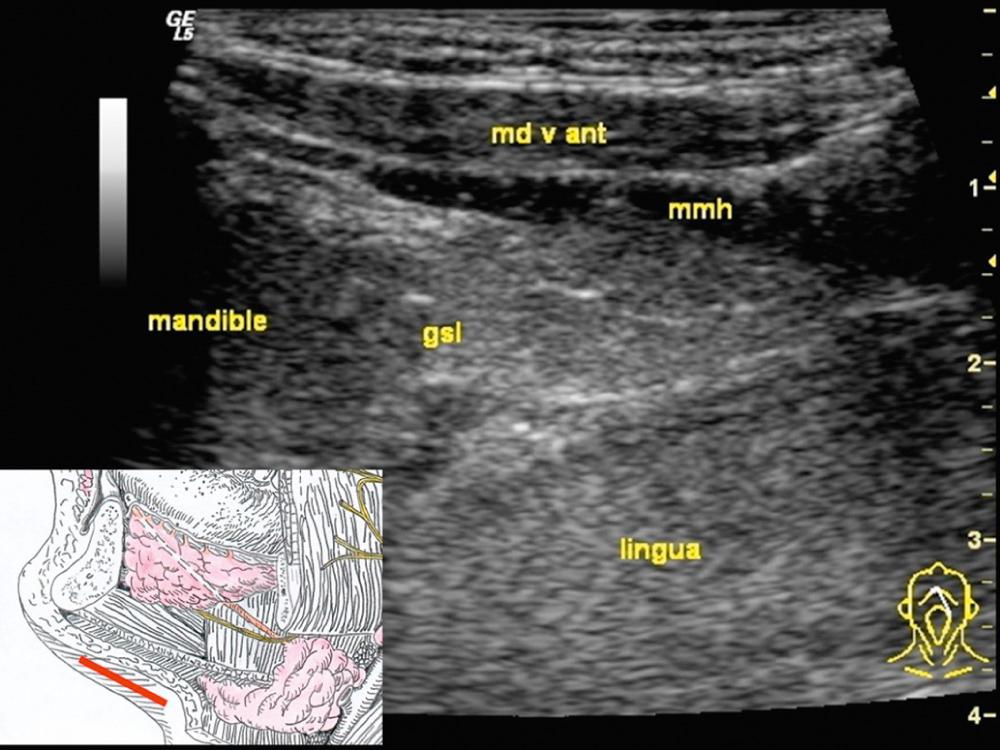
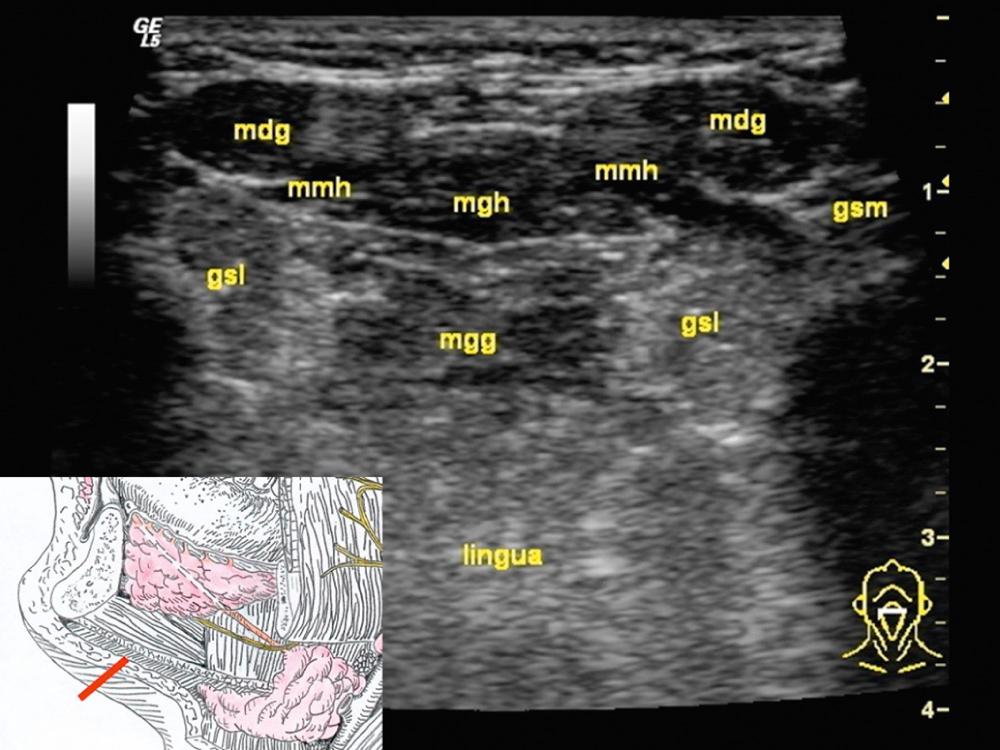
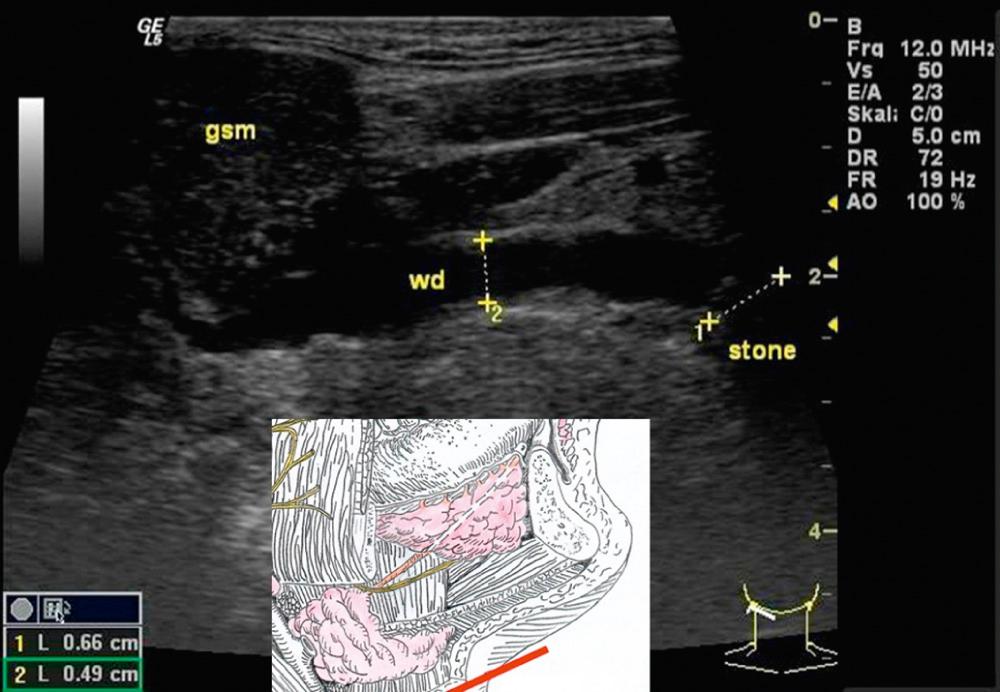
An acute viral or bacterial infection leads to a swollen gland with a hypoechoic texture (see Fig. 3.2.7 ). In a bacterial infection, the duct system may become visible due to thickened secretion. In contrast, the ultrasonographic appearance of a chronic inflammatory process (e.g., Sjögren syndrome or chronic recurrent juvenile parotitis) is characterized by multiple hypoechoic lesions within the gland ( Fig. 3.2.8 ).
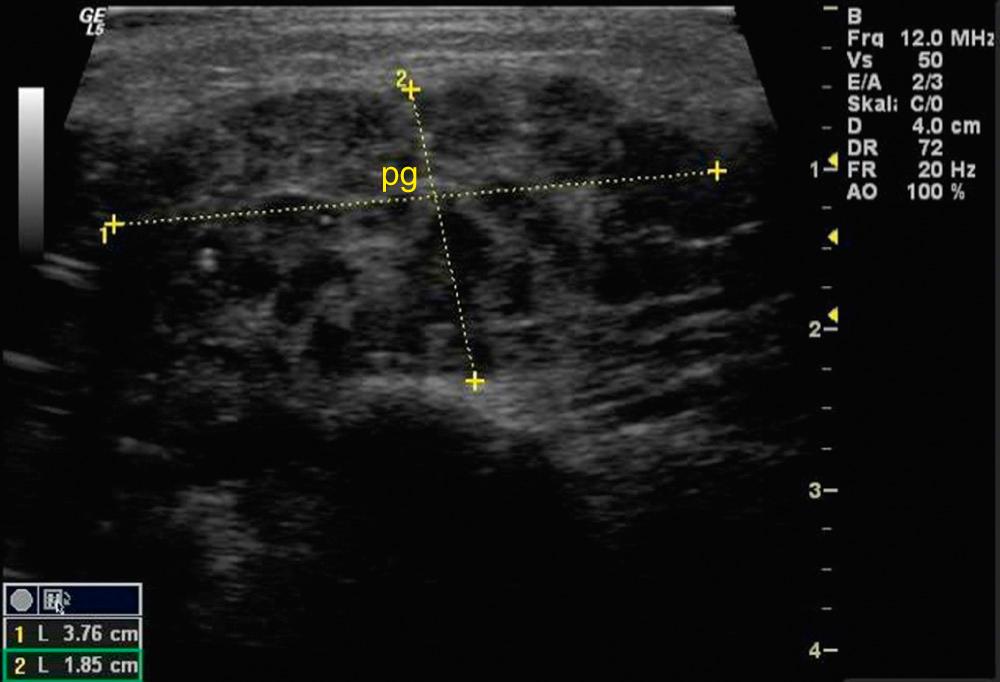
Many types of benign and malignant neoplasms can be found in the salivary glands. The most frequent benign neoplasms of the parotid salivary glands are pleomorphic adenoma and Warthin tumor.
A Warthin tumor (papillary cystadenoma lymphomatosum) is a benign lesion which not infrequently can be found in both parotid glands or as multiple lesions in one gland. They appear as oval, hypoechoic, partially anechoic, well-circumscribed lesions ( Fig. 3.2.9A ). Due to their low echogenicity they show distal acoustic enhancement and they can sometimes present with hypervascularity on ultrasound ( Fig. 3.2.9B ). It can be difficult to distinguish a Warthin tumor from a cyst, a lymph node, or other benign neoplasms such as a pleomorphic adenoma.
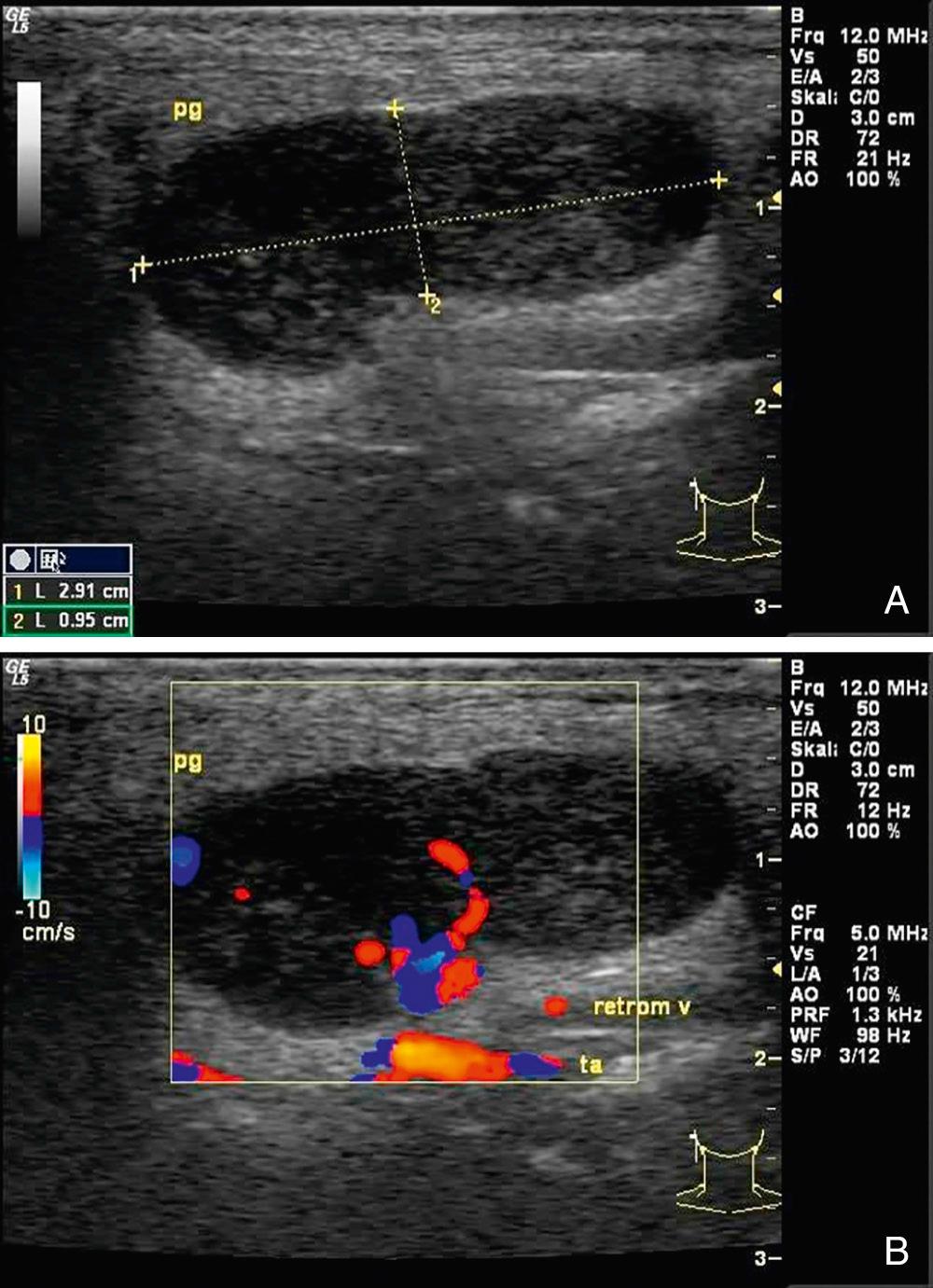
Pleomorphic adenomas are also hypoechoic with well-defined borders, with distal enhancement. They often can be differentiated from a Warthin tumor by a lobulated or polycyclic appearance ( Fig. 3.2.10 ). Their echotexture can be homogenous, inhomogeneous, or even with calcifications. Vascularity is usually poor on color Doppler; however, the pseudo-capsule can contain several vessels.
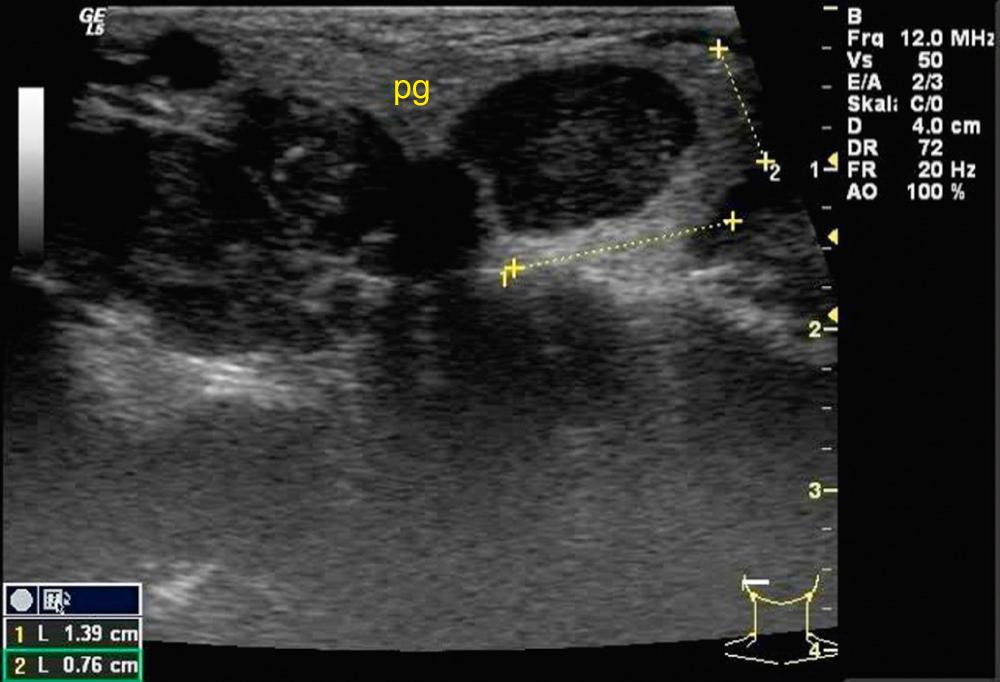
A multitude of other benign tumors exist. Vascular lesions can show increased vascularity on color Doppler and calcified-like phleboliths. Lipomas are hypoechoic with multiple hyperechoic linear structures regularly distributed within the lesions. Other benign tumors (e.g., oncocytomas, schwannomas) mostly do not have any specific or distinctive features on ultrasound examination.
The characteristics of malignant tumors can vary. They are often characterized by irregular shapes and borders, heterogeneity, often hypoechogenicity, and locoregional metastasis ( Fig. 3.2.11 and ). However, their appearance can mimic benign tumors. The histologic types of malignant tumors do not have any pathognomonic sign on ultrasound.
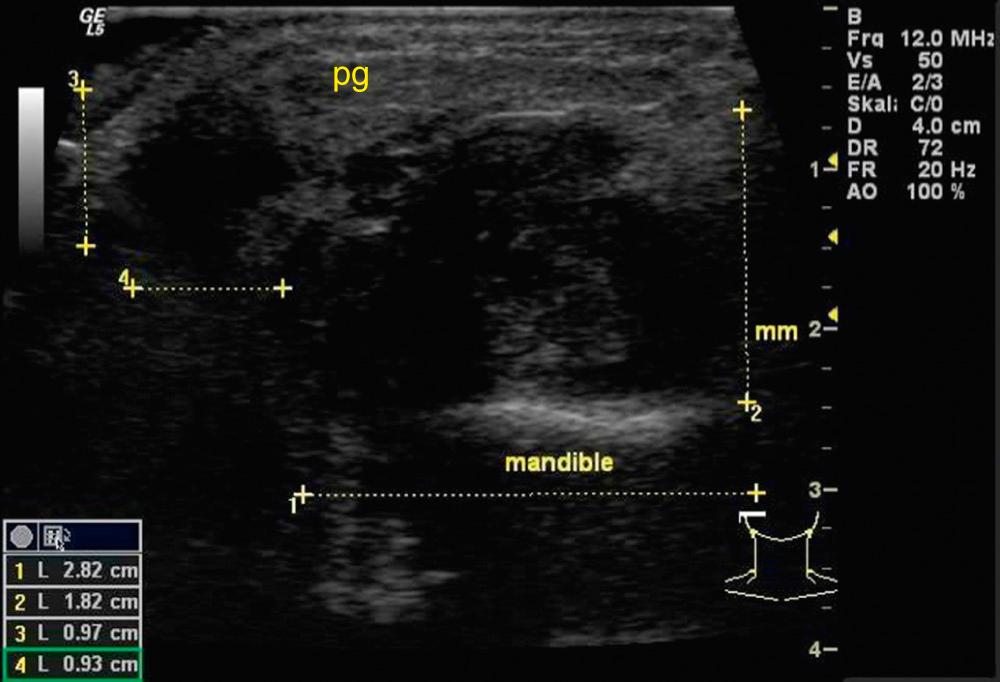
Both fine needle aspiration cytology (FNAC) and core bore biopsies (CBB) can be performed under sonographic control. The diameter of the needles for CBB is usually larger than for FNA. The risk for complications including bleeding and cell seeding is likely correlating with the diameter of the needle utilized. The amount of tissue harvested also correlates with the diameter. Multiple systems exist ( Fig. 3.2.12 ). The right setting is important: the patient and the area of interest should be situated between the examiner and the ultrasound screen, so that the examiner can view and work in the same direction without having to turn around ( Fig. 3.2.13 ). There are principally two techniques used: the “long axis” and “short axis” techniques. In the long axis technique (also shown in Fig. 3.2.13 ) the needle is advanced along the plane of the ultrasound beam (parallel technique). The movement of the needle tip can be visualized for most of the technique. This gives good control and can reduce the risk of traumatizing adjacent structures. However, adjacent structures are often not visualized using the long axis technique. Adjacent structures are more readily visualized for the short axis technique. Here the needle is not advanced within the plane of the ultrasound beam but usually is first visualized when the needle tip strikes the plane of the target lesion. The needle is seldom exactly perpendicular to the plane; however, some authors refer to the technique as a “perpendicular technique.” Sometimes anatomy and space available do not allow the use of the parallel long axis technique.

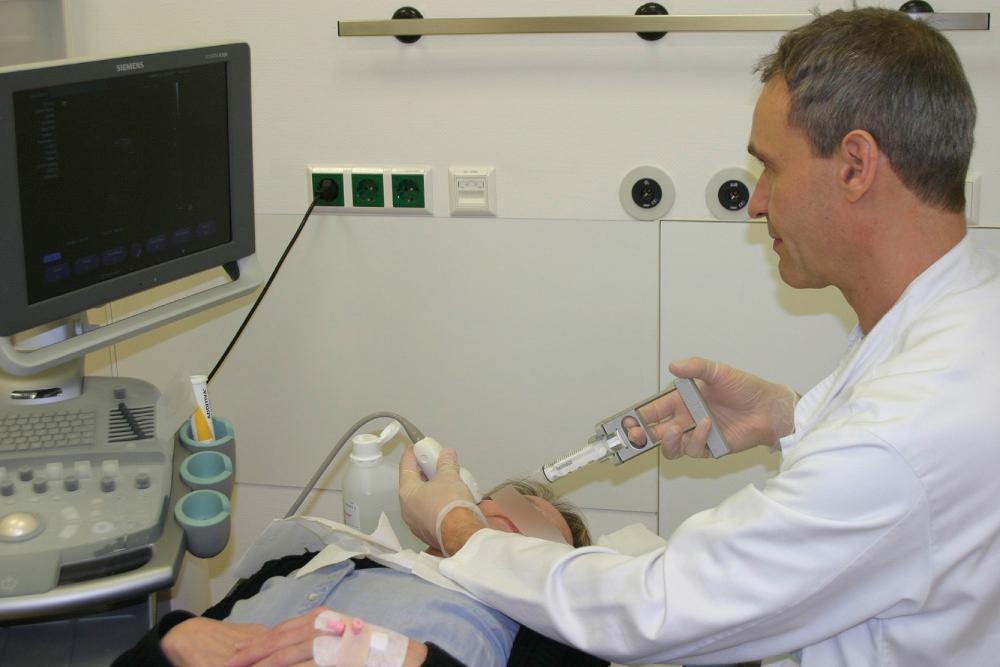
and show the parallel technique. The target structure is visualized and the trajectory for the instrument planned. The ultrasound transducer and instrument are aligned so that the instrument will advance in the plane of the ultrasound beam. The instrument should be inserted with some distance to the transducer. Otherwise, the instrument might not go deep enough, or damage the transducer. While advancing the instrument, it might be necessary to correct the ultrasound head position to visualize the target and the instrument at the same time. Especially the tip of the instrument should be seen to avoid trauma to surrounding structures. In the event that it is not possible to reach the target using the initiated path, it is advisable to pull the instrument back and start with a new direction instead of trying to bend the instrument. shows an FNAC of a pleomorphic adenoma depicted in Fig. 3.2.10 . is a record of a CBB of the adenocarcinoma shown in Fig. 3.2.11 and in .
Conventional X-ray imaging of the salivary gland has diminished relevance.
An acute infection has an ultrasound appearance of a hypoechoic texture and the ultrasonographic appearance of a chronic inflammatory process is characterized by multiple hypoechoic lesions within the gland.
Pleomorphic adenoma is characterized by a lobular appearance.
There are principally two techniques used for FNAC, the “long axis” and “short axis” techniques.
Computed tomography (CT) performed without intravenous contrast is the modality with the highest sensitivity for detection of radiopaque sialoliths. CT performed without contrast cannot reliably differentiate the various salivary gland tumors, as most malignant and benign tumors demonstrate similar CT attenuation values. CT performed with contrast will reveal enhancement in areas of increased tumor vascularity. Administration of intravenous contrast is a safe practice with added diagnostic benefits that largely outweigh some infrequent risks, including rare allergic reactions or transient decline in renal function.
Become a Clinical Tree membership for Full access and enjoy Unlimited articles
If you are a member. Log in here